carbon-based life
description: life forms primarily composed of carbon compounds
41 results
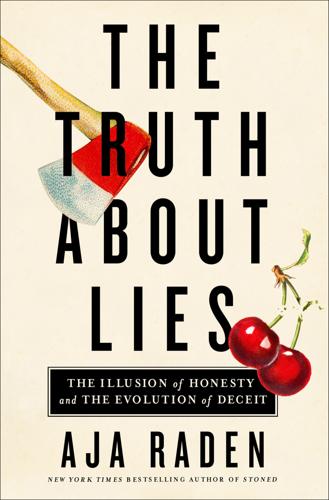
The Truth About Lies: The Illusion of Honesty and the Evolution of Deceit
by
Aja Raden
Published 10 May 2021
Radiocarbon is in everything, because rapid oxidization turns it into CO2, which is absorbed into the global carbon cycle. As a result, radiocarbon is present in all carbon-based life-forms, and any materials made from those life-forms, and any thing made from them: this paper, wooden floorboards, your lunch, your death shroud … When those carbon-based life-forms die, their unstable radiocarbon content begins to “decay” at a specific rate, called a half-life. Radiocarbon dating measures residual radioactivity—in other words, how much radiocarbon is left in a thing—to determine approximately how long ago the carbon-based life-form (say, a flax plant used to make linen for a shroud) died and began its radioactive decay.

Nexus: A Brief History of Information Networks From the Stone Age to AI
by
Yuval Noah Harari
Published 9 Sep 2024
Silicon chips can create spies that never sleep, financiers that never forget, and despots that never die. How will this change society, economics, and politics? The third and final part of the book—“Computer Politics”—examines how different kinds of societies might deal with the threats and promises of the inorganic information network. Will carbon-based life-forms like us have a chance of understanding and controlling the new information network? As noted above, history isn’t deterministic, and for at least a few more years we Sapiens still have the power to shape our future. Accordingly, chapter 9 explores how democracies might deal with the inorganic network.
…
Of course, as computers become more intelligent, they might eventually develop consciousness and have some kind of subjective experiences. Then again, they might become far more intelligent than us, but never develop any kind of feelings. Since we don’t understand how consciousness emerges in carbon-based life-forms, we cannot foretell whether it could emerge in nonorganic entities. Perhaps consciousness has no essential link to organic biochemistry, in which case conscious computers might be just around the corner. Or perhaps there are several alternative paths leading to superintelligence, and only some of these paths involve gaining consciousness.

The End of College: Creating the Future of Learning and the University of Everywhere
by
Kevin Carey
Published 3 Mar 2015
For example, he asked me, of the following four things, which contributes the most to the mass of a tree: air, water, soil, or sunlight? I said sunlight, because I thought of energy being transformed into mass. That’s a common answer, he said, and people also say soil a lot. But they’re both wrong. The right answer is air, because that’s where the carbon comes from, and trees, like people, are carbon-based life-forms. We’re mostly made up of the little carbon hexagons that the people in the MIT chemistry department scribble on their chalkboards. Because people think air is light and soil is heavy, they think soil is the likely answer. But they’re wrong. There is a lot of carbon in the air. And when people learn what they thought is true is the opposite of true, they’re surprised—and they remember.
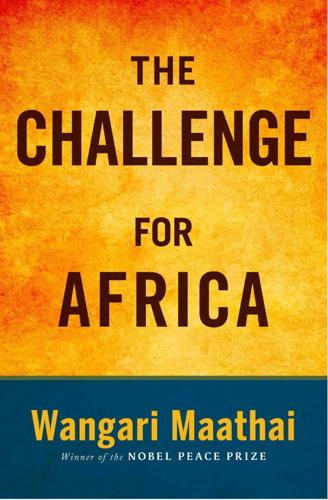
The Challenge for Africa
by
Wangari Maathai
Published 6 Apr 2009
Third, it is important to support small-scale ventures, ensure that they are sustainable, and encourage local communities to work to preserve and even rehabilitate areas of the forests that are especially vulnerable. Here, the Green Belt Movement model may be applicable. Ultimately, of course, all stakeholders should be encouraged to move away from viewing the forest as a seemingly endless source of extractable minerals and various carbon-based life-forms, and instead look at it holistically. Efforts are already being made in this area. The Coalition for Rainforest Nations, which includes Costa Rica, Indonesia, and the DRC, among others, is working to persuade governments in the global North and South to accept the idea that a forest has value by not being exploited, in that it stores carbon in the ground, and if left undisturbed will continue to do so into the future.

Pattern Recognition
by
William Gibson
Published 2 Jan 2003
She's here on Blue Ant's ticket. Relatively tiny in terms of permanent staff, globally distributed, more post-geographic than multinational, the agency has from the beginning billed itself as a high-speed, low-drag life-form in an advertising ecology of lumbering herbivores. Or perhaps as some non-carbon-based life-form, entirely sprung from the smooth and ironic brow of its founder, Hubertus Bigend, a nominal Belgian who looks like Tom Cruise on a diet of virgins' blood and truffled chocolates. The only thing Cayce enjoys about Bigend is that he seems to have no sense at all that his name might seem ridiculous to anyone, ever.
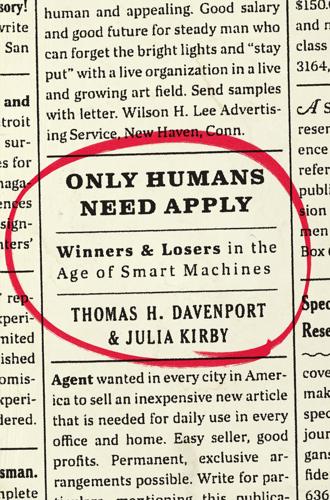
Only Humans Need Apply: Winners and Losers in the Age of Smart Machines
by
Thomas H. Davenport
and
Julia Kirby
Published 23 May 2016
What Those Who Step In Look Like You’re a candidate for stepping in if . . . • You are a business or professional person first and an automation/technology expert second; • You could be described as a “purple person”—bridging the gap between business or organizational need and technology capability; • You’re good at interfacing with both silicon- and carbon-based life-forms; • You’re not a full-time technologist, but you follow developments in IT and are not at all intimidated by it; • You are willing to learn a lot about the logic of how an automated system works and a little about how it is programmed; • You are willing to translate for other humans the specific decisions that an automated system makes; • You are not now, nor have you ever been, a robot, android, automaton, avatar, or cyborg.

The World Without Us
by
Alan Weisman
Published 5 Aug 2008
If so, they might glimpse the sharp fluorescent signature of polyaro-matic hydrocarbons (PAHs). They might be astonished at how PAHs and dioxins, two substances emitted naturally by volcanoes and forest fires, suddenly leaped from background levels into center-stage chemical prominence in soil and crops as the decades advanced. If they were carbon-based life-forms like us, they might leap themselves, or at least back away, because both PAHs and dioxins can be lethal to nervous systems and other organs. PAHs were buoyed into the 20th century aboard clouds of exhaust from automobiles and coal-fired power plants; they’re also in the pungent odor of fresh asphalt.

Genius Makers: The Mavericks Who Brought A. I. To Google, Facebook, and the World
by
Cade Metz
Published 15 Mar 2021
Page worried that paranoia over the rise of AI would delay this digital utopia, even though it had the power to bring life to worlds well beyond the Earth. Musk pushed back, asking how Page could be sure this superintelligence wouldn’t end up destroying humanity. Page accused him of being “specieist” because he favored carbon-based life-forms over the needs of new species built with silicon. At least for Tegmark, this debate over late-night cocktails showed the attitudes that were lining up against each other in the heart of the tech industry. * * * — ABOUT six months after the conference in Puerto Rico, Greg Brockman walked down Sand Hill Road, the short stretch of asphalt that winds past more than fifty of the biggest venture capital firms in Silicon Valley.
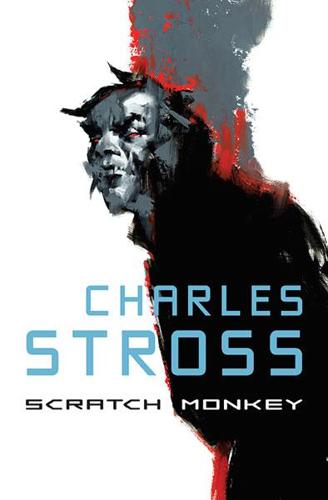
Scratch Monkey
by
Stross, Charles
Published 1 Jan 2011
You say there'll be a broadcast upload coming soon, and it'll be an Ultrabright: well, I guess maybe. But the rest of it --" "You've got brains. Why don't you use them?" she snapped, finally giving rein to her anger at being taken by surprise. "Item! An Ultrabright attacker zaps every unshielded Expansion processor and carbon-based lifeform in the system. Item: Ultrabrights are worse than Superbrights for hogging dataflow. They need input or they go insane, like Anubis. So there's no Ultrabright on board that thing -- it's a dumb attack robot, a berserker. But here's another item: they need to occupy this system fast, unless they want it to be retaken by the Superbrights.

Business Metadata: Capturing Enterprise Knowledge
by
William H. Inmon
,
Bonnie K. O'Neil
and
Lowell Fryman
Published 15 Feb 2008
The people who have extensive knowledge of the enterprise processes, data, and metadata are leaving the enterprise through retirement or other reasons. These individuals carry a vast amount of the corporation’s metadata in their heads. One can consider these individuals to have metadata repositories in their “gray matter.” Thus, we often allude to the corporation’s metadata repositories as being in carbon-based life forms that have legs (and each is an isolated local repository). The enterprise can lose significant business metadata as individuals leave the enterprise unless they establish a metadata repository. ✦ To aid staff members in understanding an enterprise business process and the IT implementation of the process (for communications and productivity). 5.2 Why Consolidate or Integrate Metadata?
…
(The real-world knowledge capture example used later in this chapter is from this glossary project.) 6.3 The Corporate Knowledge Base 6.3.1 The Corporate Glossary: Beginning of a Knowledge Base In Chapter 4, we discussed the importance of well-defined terminology and standard vocabulary in an enterprise. The glossary is also a great place to begin a knowledge capture initiative and to start encouraging businesspeople to contribute their expertise. 6.3.2 What Is the Corporate Knowledge Base? The Carbon-Based Life Form (i.e., human being) is the main repository of the Corporate Knowledge Base, including business metadata. When each person leaves the corporation, a piece of the metadata repository is leaving, and potentially critical corporate knowledge goes out the door with him or her. What is the Corporate Knowledge Base?

Building Habitats on the Moon: Engineering Approaches to Lunar Settlements
by
Haym Benaroya
Published 12 Jan 2018
The advantage of missions that include astronauts is that they may be able to figure out how to repair something that stopped working, and they can modify the research itinerary if something unexpected of greater scientific interest is found. (It would be a shame if non-carbon-based life forms were sitting to the side of a robotic explorer that is looking for carbon-based life forms, and the robot’s sensors did not notice these life forms because the sensors were programmed so narrowly!) The objective of the lunar observatory case study depicted in Figure 6.1 was to understand the effort required to build and operate a long-duration, human -tended astronomical observatory on the Moon’s far side.
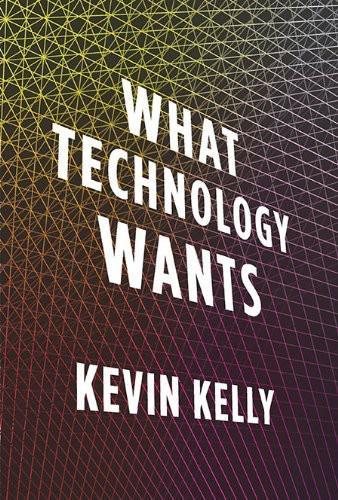
What Technology Wants
by
Kevin Kelly
Published 14 Jul 2010
It has a particularly friendly relationship with oxygen. Carbon is easily oxidized as fuel for animals and easily unoxidized (reduced) by chlorophyll in plants. And of course it forms the backbone for long chains of incredibly diverse megamolecules. Silicon, carbon’s sister element, is the most likely alternative candidate to produce a non-carbon-based life form. Silicon also is very prolific in its hooking up with a variety of elements, and it is more abundant on the planet than carbon. When science-fiction authors dream up alternative life forms, they are often based on silicon. But in real life silicon suffers from a few major drawbacks. It does not link up into chains with hydrogen, limiting the size of its derivatives.
…
Perhaps silicon-based life inhabits a fiery world and the silicates are molten. Or perhaps the matrix is very cold liquid ammonia. But unlike ice, which floats and insulates the unfrozen liquid, frozen ammonia sinks, allowing the oceans to freeze whole. These concerns are not hypothetical but are based on experiments to produce alternatives to carbon-based life. So far, all evidence points to DNA as the “perfect” molecule. For even though clever minds like ours may invent a new life base, finding a life base that can create itself is an entirely higher order. A potential synthetic life base created in the lab might be robust enough to survive on its own in the wild but fail to organize itself into existence.
…
Nor does it remove the channels that DNA has laid for evolution on Earth. The constraints of physics, chemistry, and geometry have governed life from its origins onward—and even into the technium. “Underlying all the diversity of life is a finite set of natural forms that will recur over and over again anywhere in the cosmos where there is carbon-based life,” claim biochemists Michael Denton and Craig Marshall. Evolution simply cannot make all possible proteins, all possible light-gathering molecules, all possible appendages, all possible means of locomotion, all possible shapes. Life, rather than being boundless and unlimited in every direction, is bounded and limited in many directions by the nature of matter itself.
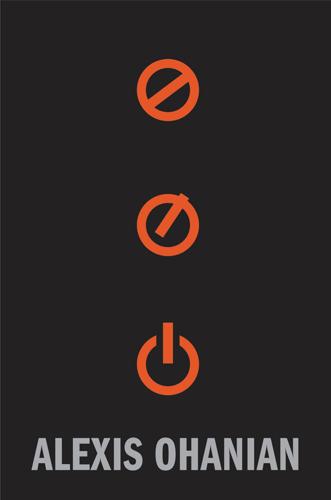
Without Their Permission: How the 21st Century Will Be Made, Not Managed
by
Alexis Ohanian
Published 30 Sep 2013
louder with every replay. Steve was yelling, too. Everyone else in the bar was hating us. We didn’t give a damn. Later, I got my hands on the high-def footage of Taylor during and after that hit. He pops up, electrified. That fire. That heart. It’s something awesome when you watch a human—just another carbon-based life-form—doing what he does so well. And loving it. That hit took all the air out of Cowboys Stadium, from the fans to the field. The Cowboys turned the ball over on downs, and Redskins players poured Gatorade on Coach Gibbs. Not a typical week-two celebration, but we thought it was appropriate. Steve and I went home singing our fight song, and I had the joy of surprising my dad with the news the next morning.

One More Thing: Stories and Other Stories
by
B. J. Novak
Published 4 Feb 2014
“I’m a devoted hunter, and I can say I’ve never seen antlers that big,” said Councilman Thomas Ross. “Those were some major antlers.” Scientists have determined that antlers are a result of an imperceptibly incremental evolutionary adaptation over the course of millions of years, a process that began with one single-celled carbon-based life form which traces its own origin to an infinitely small dot of arguably infinite energy that exploded 13.7 billion years ago due to reasons that are thought to be best understood by a man in a wheelchair who speaks through a computerized voice box (see Regular News). World’s Largest Tomato to Become Tomato Sauce NAPOLI, ITALY—A tomato declared by Guinness World Records to be the world’s largest tomato will now become tomato sauce, says the farmer who grew it.

Stamping Butterflies
by
Jon Courtenay Grimwood
Published 1 Jan 2004
So said the butterfly. Obviously enough, this was not Zaq's original name because that had been given up during the ceremony of rebirth. The fifty-third Chuang Tzu wore the very first on his cloak as a diamond buckle. Every emperor became a diamond eventually. It was one of the few advantages of living as a carbon-based life form. All that was needed was death, cremation at fifteen hundred degrees and enough pressure to replicate geophysical forces found in the transmutation of soft carbon to intricate lattice. There was a circular elegance to this solution which appealed to the Library on several levels, although it could explain its thoughts to Zaq on only three, the others being beyond the understanding of a small child.
…
So the darkness began with the most dense of the data hordes, examining the SZ Loyal Prince and its semiAI, running millions of routines in an attempt to understand its origins. A type II star, a sequence of nine planets (actually seven, as two did not rate that definition or, if they did, so did others not included in the nine), carbon-based life, relatively new, technologically simple. The darkness trawled opera from Peking, Rodin's Kiss, music by Brahms, the pyramids and Sphinx, the Great Wall of China and a painting of a soup can without understanding what any of them might be (or that they were carried under protest from Beijing, their mix chosen to reflect global levels of culture).

Inside the Robot Kingdom: Japan, Mechatronics and the Coming Robotopia
by
Frederik L. Schodt
Published 31 Mar 1988
In September of 1985 the 15th International Symposium on Industrial Robots (ISIR) was held in Tokyo, and it was accompanied, as usual, by an exposition at Harumi pier, east of the city. In front of the huge halls, a billboard-sized painting of the ultimate cliche in industrial robot art, a metal hand reaching out to touch a carbon-based life form (a butterfly, in this case), announced the robots inside. In concept this show was nearly identical to those held annually in the United States. But the Japanese version differed dramatically in several important ways. It was sponsored not only by the Japan Industrial Robot Association but also by the Daily Industrial News.

The Misbehavior of Markets: A Fractal View of Financial Turbulence
by
Benoit Mandelbrot
and
Richard L. Hudson
Published 7 Mar 2006
In this spirit, some researchers have wired professional traders to measure skin resistance, EEG patterns, and pulse rates, in search of the biological imperative behind a “buy” order. And there is computer-intensive finance. Wall Street has long been the computer industry’s biggest customer, unleashing “genetic algorithms,” “neural networks,” and other computational techniques on the market in hopes that silicon intelligence can find profitable patterns where carbon-based life forms cannot. This “post-modern” finance has yet to yield real success. Nobody has hit the jackpot. A Game of Chance So, as Lenin’s revolutionary manifesto put it: What is to be done? As preparation, play a game. On the facing page you see four price charts of the kind you would find in a brokerage-house report, but with the identifying dates and values removed.
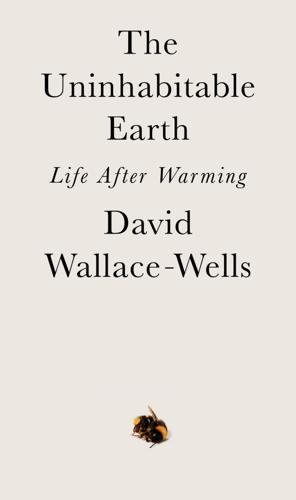
The Uninhabitable Earth: Life After Warming
by
David Wallace-Wells
Published 19 Feb 2019
But scholars like Andreas Malm have a different perspective: we have been extracted from that muck only by a singular innovation, one engineered not by entrepreneurial human hands but in fact millions of years before the first ones ever dug at the earth—engineered by time and geologic weight, which many millennia ago pressed the fossils of Earth’s earlier carbon-based life forms (plants, small animals) into petroleum, like lemon under a press. Oil is the patrimony of the planet’s prehuman past: what stored energy the earth can produce when undisturbed for millennia. As soon as humans discovered that storehouse, they set about plundering it—so fast that, at various points over the last half century, oil forecasters have panicked about running out.

Being You: A New Science of Consciousness
by
Anil Seth
Published 29 Aug 2021
On this view, we already are virtual sentient agents in a virtual universe. Some captivated by the techno-rapture see a fast-approaching Singularity, a critical point in history at which AI is poised to bootstrap itself beyond our understanding and outside our control. In a post-Singularity world, conscious machines and ancestor simulations abound. We carbon-based life forms will be left far behind, our moment in the sun over and done. It doesn’t take much sociological insight to see the appeal of this heady brew to our technological elite who, by these lights, can see themselves as pivotal in this unprecedented transition in human history, with immortality the prize.

An Optimist's Tour of the Future
by
Mark Stevenson
Published 4 Dec 2010
The ‘organic’ label refers to the fact that the polymers in question are partly carbon. Because carbon is such a versatile atom (it will form all sorts of chemical bonds), it’s the one nature prefers as the key building block for living things, which is why aliens in sci-fi movies of the seventies like to refer to humans as ‘carbon-based life forms’ (it’s the first thing their scanners pick up). It’s not just us, though. All plants and animals are carbon based. This is why chemistry involving carbon is often referred to as ‘organic’ chemistry. Like the two types of doped silicon used in traditional solar cells, conductive polymer molecules can be either ‘positive’ or ‘negative.’

Boom: Bubbles and the End of Stagnation
by
Byrne Hobart
and
Tobias Huber
Published 29 Oct 2024
While many strands of research in biotech and genetic engineering are concerned with the perfection of humankind and motivated by the transcendent significance of the scientific endeavor, some of the most committed AI proselytizers believe that AI might realize something akin to the technological Kingdom of God by ensuring our immortality. 386 This transhumanist view is often coupled with a belief in the singularity, which—because it designates the historical moment at which machine intelligence transcends human intelligence and silicon and carbon-based life forms merge—marks, for believers, the inevitable historical end state toward which technological progress teleologically converges. 387 Revealing a deep similarity with the Judeo-Christian apocalyptic tradition—the view that at the end of history, God will create a new world and resurrect a glorified and eternal humanity—the singularity represents a rupture with the present.
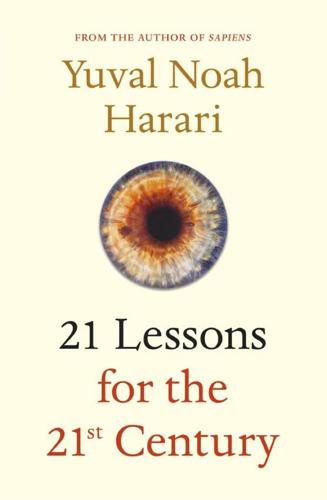
21 Lessons for the 21st Century
by
Yuval Noah Harari
Published 29 Aug 2018
State laws, social norms, economic institutions – they might all collapse. Most stories are held together by the weight of their roof rather than by the strength of their foundations. Consider the Christian story. It has the flimsiest of foundations. What evidence do we have that the son of the Creator of the entire universe was born as a carbon-based life form somewhere in the Milky Way about 2,000 years ago? What evidence do we have that it happened in the Galilee area, and that His mother was a virgin? Yet enormous global institutions have been built on top of that story, and their weight presses down with such overwhelming force that they keep the story in place.
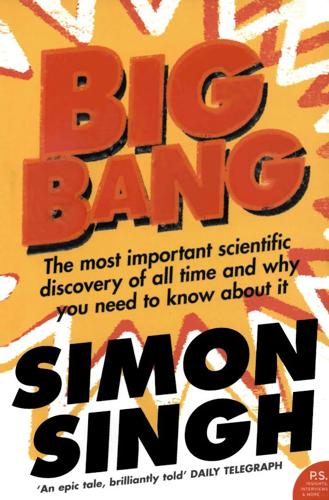
Big Bang
by
Simon Singh
Published 1 Jan 2004
Excited nuclei can possess only very particular masses, and scientists cannot simply wish that they have a convenient value. Fortunately, Hoyle was more than just a wishful thinker. His confidence in the existence of just the right excited state of carbon was based on a strange but valid chain of logical reasoning. Hoyle’s premise was that he existed in the universe. Furthermore, he pointed out, he was a carbon-based life form. Therefore carbon existed in the universe, so there must have been a way of creating carbon. However, the only way to create carbon seemed to rely on the existence of a specific excited state of carbon. Consequently, such an excited state must exist. Hoyle was rigorously applying what would later become known as the anthropic principle.
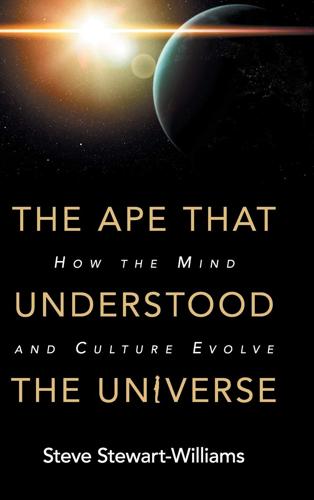
The Ape That Understood the Universe: How the Mind and Culture Evolve
by
Steve Stewart-Williams
Published 12 Sep 2018
People have been known to incinerate each other, slice off each other’s body parts, and call each other hurtful names. They imprison other animals by the millions, torture them, and then heat and eat their corpses. And yet still it has to be said: Despite their many, many flaws, human beings are among the most cooperative and altruistic carbon-based life forms in this neck of the galaxy. Infested with Ideas They’re also among the most baffling. Human beings devote extraordinary quantities of time and energy to activities that, as far as this Betelgeusean can tell, do nothing to help them survive or reproduce. I’ll give you some examples.
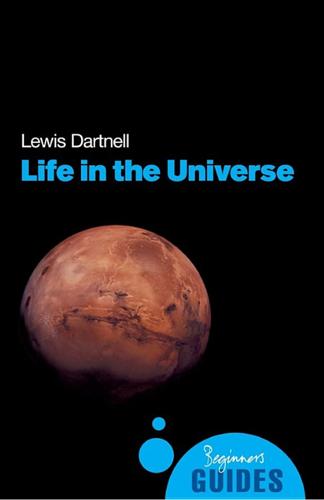
Life in the Universe: A Beginner's Guide
by
Lewis Dartnell
Published 1 Mar 2007
The analogous process would produce silicon dioxide, which is sand. This is a hard, insoluble, solid; very tricky for life to deal with. The final reason to favour carbon-based life, at least in our corner of the galaxy, is that the organic building blocks are rife throughout the heavens. Primordial planets are thought to have been utterly smothered with falling vital carbon compounds early in their development. Similar silicon compounds are not seen in space and so it really does seem that searching for carbon-based life is the only sensible option. Water Whether extra-terrestrial life would be dependent on liquid water is much less definite.
…
Even if the solvent is liquid in such cold climates, the chemistry will not be the same. The colder the conditions, the more slowly processes occur and the more effective an enzyme must be to get reactions to proceed at a useful rate. At these temperatures, biochemical reactions might proceed so sluggishly as to render life impossible. As with non-carbon-based life, a non-water-based ecology is so alien as to make it difficult to design experiments or instruments to send to other worlds. We haven’t even begun to engineer an alternative metabolic network that operates within water, let alone one based on an entirely different solvent with chemical properties we’ve barely researched.
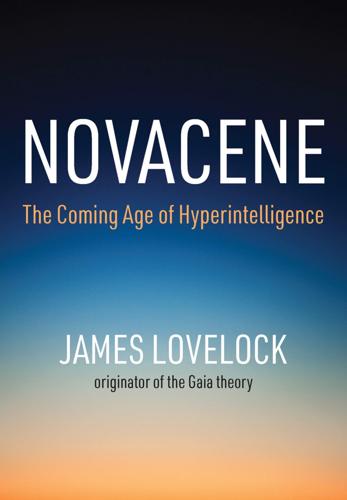
Novacene: The Coming Age of Hyperintelligence
by
James Lovelock
Published 27 Aug 2019
The needs of cyborgs are quite different from ours. Oxygen is a nuisance, not a vital necessity. There is far too much water for comfort. Maybe they will decide to move to Mars, a planet hopelessly unsuited for wet carbonaceous lives like ours, but which might be quite comfortable for dry-silicon- or carbon-based life of an IT kind. Would they go further than Mars? In practice, while thought could be rapid for our descendants, the normal limitations of the universe, such as the speed of light, remain as restricting as ever. Will they have the capacity to move out into our galaxy and even the universe? Or they could improve conditions on Earth in ways that would not suit us.

Energy and Civilization: A History
by
Vaclav Smil
Published 11 May 2017
The prehistoric development of human societies and the growing complexity of high civilizations have been marked by countless energy imperatives. The most fundamental physical limit is, of course, the incoming solar radiation. This flow keeps the planet’s temperatures within the range suitable for carbon-based life and powers the planet’s atmospheric circulation and water cycle. Temperature, precipitation, and the availability of nutrients are the key determinants of plant productivity, but only a part of the newly synthesized biomass is digestible. These realities shaped the basic existential modes, population densities, and social complexities of all foraging societies.
…
When ranked by the size of their labor force, in 1960 11 out of America’s 15 largest companies (led by GM, Ford, GE, and United States Steel) were producers of goods employing more than 2.1 million workers; by 2010 just two makers of goods, HP and GE, employing about 600,000 people, were among the top 15, and the group is now dominated by retailers and service-providing firms (Walmart, UPS, McDonald’s, Yum, Target). The next logical step is to see this reality as part of the process leading to the eventual displacement of carbon-based life by machines (Wesley 1974). Evolutionary parallels between the two entities are intriguing. Machines are thermodynamically alive, and their diffusion conforms to natural selection: failures do not reproduce, new species proliferate, and they tend toward maximum supportable mass; successive generations are also progressively more efficient (recall all those impressively lower mass/power ratios!)
…
As fundamental as the laws of thermodynamics are, energy is not the only determinant of the biosphere’s evolution, or of life in general and human actions in particular: evolution is inevitably entropic, but there are other inputs that cannot be either substituted or recycled. The Earth suffused with radiation could not host carbon-based life without an adequate availability of elements indispensable for biochemical conversions, including phosphorus in ATP, nitrogen and sulfur in proteins, cobalt and molybdenum in enzymes, silicon in plant stems, or calcium in animal shells and bones. Epigenetic information channels energy into maintenance, growth and differentiation, and reproduction; these irreversible transformations dissipate both matter and energy and are affected by the availability of land, water, and nutrients and by the need to cope with interspecies competition and predation.
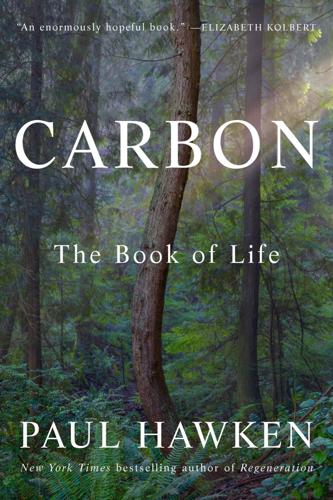
Carbon: The Book of Life
by
Paul Hawken
Published 17 Mar 2025
If they did not repulse, fusion would occur when we stepped on dirt, and the Earth would be no bigger than a baseball. The question remained: How did lighter elements become carbon? Hoyle was intrigued by the puzzle. “Since we are surrounded by carbon in the natural world, and we are ourselves carbon-based life, the stars must have discovered a highly effective way of making it, and I am going to look for it.” You might say he did the math. He knew that two alpha particles fuse into beryllium, an extremely unstable atom that quickly reverts back to alpha particles. In physics, quickly has a different meaning.
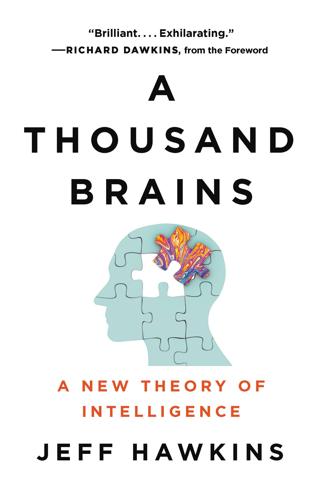
A Thousand Brains: A New Theory of Intelligence
by
Jeff Hawkins
Published 15 Nov 2021
If, for example, the machines were built using silicon chips like the ones we use in computers, then would they need to build silicon-chip-manufacturing plants and all the necessary supply chains? This might be infeasible. Perhaps we will learn how to create intelligent machines that are able to replicate using common elements, similar to carbon-based life on Earth. I don’t know how to overcome the many practical problems that interstellar travel presents. But, once again, I believe we shouldn’t focus on the physical manifestations of future intelligent machines. There may be ways of building intelligent machines using materials and construction methods that we have not yet invented.
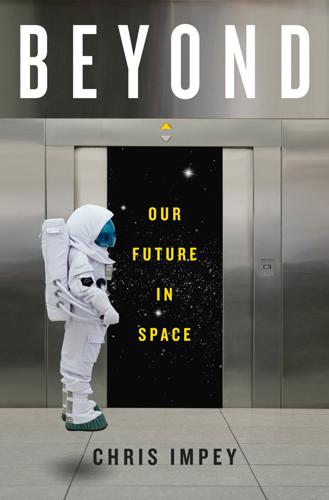
Beyond: Our Future in Space
by
Chris Impey
Published 12 Apr 2015
They’re dismayed that laws of nature seem to be an arbitrary and messy outcome of random fluctuations in the fabric of space-time.13 A controversial argument deriving from fine-tuning is the fact that the forces of nature and the attributes of the universe appear to take values required for carbon-based life to exist. If the electromagnetic force was stronger or weaker, stable atoms could not form. If the strong nuclear force was stronger or weaker, carbon couldn’t be created in stars. If the gravitational constant was stronger, stars would be very short-lived; if it was weaker, stars wouldn’t shine or make the heavy elements.
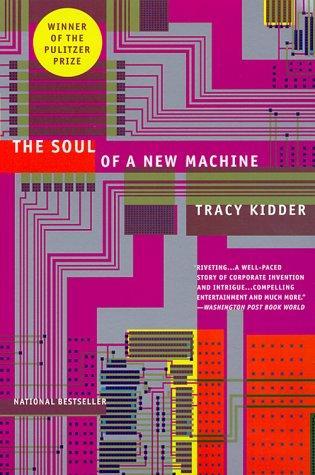
The Soul of a New Machine
by
Tracy Kidder
Published 1 Jan 1981
Maybe in promoting the metaphorical relationship between people and machines, cybernetics tended to cheapen and corrupt human perceptions of human intelligence. Or perhaps this science promised to advance the intelligence of people as well as of machines and to imbue the species with a new, exciting power. "Silicon-based life would have a lot of advantages over carbon- based life," a young engineer told me once. He said he believed in a time when the machines would "take over." He snapped his fingers and said, "Just like that." He seemed immensely pleased with that thought. To me, though, the prospects for truly intelligent computers looked comfortably dim. To some the crucial issue was privacy.
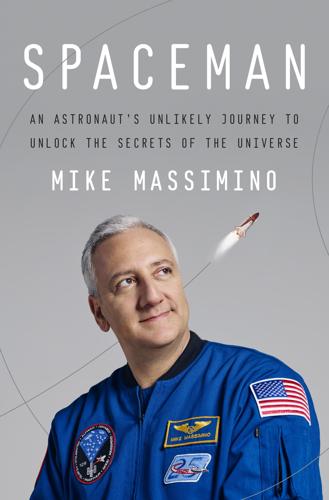
Spaceman: An Astronaut's Unlikely Journey to Unlock the Secrets of the Universe
by
Mike Massimino
Published 3 Oct 2016
It would also be able to observe ultraviolet and infrared light, both of which get absorbed by Earth’s atmosphere. A space-based telescope would be able to see things and learn things that no human had ever dreamed of. The Hubble does all of that and more. It takes thermal images of faraway planets, helping determine which ones might be capable of supporting carbon-based life. It measures the distance between stars with incredible accuracy. It’s shown us how fast the universe is expanding and exactly how old it is (13.8 billion years, in case you were wondering). Hubble discovered Pluto’s four new moons. It helped us learn about how stars are born and how black holes are formed.

Fire and Ice: The Volcanoes of the Solar System
by
Natalie Starkey
Published 29 Sep 2021
What we now know is that black smoker organisms are often known as extremophiles: they positively love extreme (that’s extreme to us humans) environments, such as radically un-human temperatures (when they are called thermophiles), acidities (acidophiles), alkalinities (alkaliphiles) or chemical concentrations (chemophiles). While waters with temperatures of 350°C (660°F) might not sound very habitable to us, for many organisms they are bearable for short periods, even if the upper limit that any carbon-based life can survive permanently is said to be 123°C (253°F) – the temperature limit for maintaining stable carbon bonds. The biochemical reactions that fuel the organisms on hydrothermal vents are collectively known as chemosynthesis, which involves the biological conversion of carbon-containing molecules and nutrients into organic matter.

Global Catastrophic Risks
by
Nick Bostrom
and
Milan M. Cirkovic
Published 2 Jul 2008
The process of proton decay converts the mass energy of the particles into radiation, so the white dwarfs evaporate away. As the proton decay process grinds to completion, perhaps 1040 years from now, all of the degenerate stellar remnants disappear from the universe. This milestone marks a definitive end to life as we know it, as no carbon-based life can survive the cosmic catastrophe induced by proton decay. Nonetheless, the universe continues to exist, and astrophysical processes continue beyond this end of known biology. 2.7 The era of black holes After the protons decay, the universe grows even darker and more rarefied. At this late time, roughly when the universe is older than 1 045 years, the only stellar-like objects remaining are black holes.
…
How far into the future can living organisms survive? Although this question is of fundamental importance and holds enormous interest, our current understanding of biology is not sufficiently well developed to provide a clear answer. To further complicate matters, protons must eventually decay, as outlined above, so that carbon based life will come to a definitive end. Nonetheless, some basic principles can be discussed if we are willing to take a generalized view oflife, where we consider life to be essentially a matter of information processing. This point of view has been pioneered by Freeman Dyson ( 1 979) , who argued that the rate of metabolism or information processing in a generalized life form should be proportional to its operating temperature.

Darwin Among the Machines
by
George Dyson
Published 28 Mar 2012
One atom of silicon combines with two atoms of oxygen to produce silicon dioxide, or silica, which makes up 59 percent of the thin, floating crust—a silica wafer—that is solid ground to us. Silica, in one form or another, is the principal ingredient of 95 percent of the rock beneath our feet. Exobiologists consider silicon a possible platform for extraterrestrial life. On our planet, carbon-based life came first, although, according to the theories of A. G. Cairns-Smith, siliceous clays may have given our genetic system its start. Self-reproducing clay crystals may have served as a template for the beginnings of organic life, just as organic life is now serving as a substrate for the proliferation of self-reproducing forms of silicon and their associated code.

In Our Own Image: Savior or Destroyer? The History and Future of Artificial Intelligence
by
George Zarkadakis
Published 7 Mar 2016
In the absence of DNA molecules or other physical memory, where was the ur-information for life encoded and stored? We simply cannot answer this. Unless of course we accept a Platonic perspective and place blind faith in universal forms that exist outside a material universe. Unless we believe that there is a mathematical blueprint for carbon-based life in the metaphysical archives of universal forms. However, if, like me, you are not quite content with Platonic metaphysics, then we must consider another explanation for life: that complex automata (e.g. bacteria, animals, humans) can arise from very simple automata (e.g. autocatalytic chemical reactions).

Space Chronicles: Facing the Ultimate Frontier
by
Neil Degrasse Tyson
and
Avis Lang
Published 27 Feb 2012
Next most common in the universe is helium: chemically inert, and thus not useful to the human body. Inhaling it makes a good party trick, but it’s not chemically useful to life. Next on the cosmic list is oxygen; next in the human body and all life on Earth is oxygen. Carbon comes next in the universe; carbon comes next in life. It’s a hugely fertile element. We ourselves are carbon-based life. Next in the universe? Nitrogen. Next in life on Earth? Nitrogen. It all matches one for one. If we were made of an isotope of bismuth, you’d have an argument that we’re something unique in the cosmos, because that would be a really rare thing to be made of. But we’re not. We’re made of the commonest ingredients.

Accelerando
by
Stross, Charles
Published 22 Jan 2005
What about you?" "Where you go, I go." She leans against him. "Isn't that what matters in the end?" she murmurs. Chapter 3 Survivor This time, more than a double handful of years passes between successive visits to the Macx dynasty. Somewhere in the gas-sprinkled darkness beyond the local void, carbon-based life stirs. A cylinder of diamond fifty kilometers long spins in the darkness, its surface etched with strange quantum wells that emulate exotic atoms not found in any periodic table that Mendeleyev would have recognized. Within it, walls hold kilotonnes of oxygen and nitrogen gas, megatonnes of life-infested soil.

The Singularity Is Near: When Humans Transcend Biology
by
Ray Kurzweil
Published 14 Jul 2005
at http://www.physlink.coml Education/ essay_weinberg.cfm. 8. According to some cosmological theories, there were multiple big bangs, not one, leading to multiple universes (parallel multiverses or "bubbles"). Different physical constants and forces apply in the different bubbles; conditions in some (or at least one) of these bubbles support carbon-based life. See Max Tegmark, "Parallel Universes," Scientific American (May 2003): 41–53; Martin Rees, "Exploring Our Universe and Others," Scientific American (December 1999): 78–83; Andrei Linde, "The Self-Reproducing Inflationary Universe," Scientific American (November 1994): 48–55. 9. The "many worlds" or multiverse theory as an interpretation of quantum mechanics was developed to solve a problem presented by quantum mechanics and then has been combined with the anthropic principle.

The Stack: On Software and Sovereignty
by
Benjamin H. Bratton
Published 19 Feb 2016
As robotics and cloud hardware of all scales blend into a common category of machine, it will be unclear for everyday human-robotic interaction whether one is encountering a fully autonomous, partially autonomous, or completely human-piloted synthetic intelligence. Everyday interactions replay the Turing test over and over. Is there a person behind this machine, and if so how much? In time, the answer will matter less, and the postulation of human (or even carbon-based life) as the threshold measure of intelligence and as the qualifying gauge of a political ethics may seem like tasteless vestigial racism, replaced by less anthropocentric frames of reference. The position of the User then maps only very incompletely onto any one individual body. From the perspective of the platform, what looks like one is really many, and what looks like many may only be one.
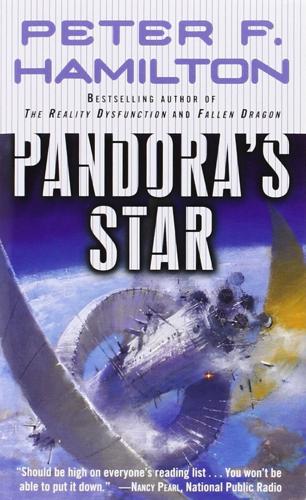
Pandora's Star
by
Peter F. Hamilton
Published 2 Mar 2004
Tunde confirmed that gravitational readings showed two gas giants and three small solid planets were orbiting the star, with indications of several large asteroids. It livened up the daily department heads meeting when he told them that one of the solid worlds was within the life band, the distance from the star that would allow carbon-based life to evolve should the planetary conditions be favorable, such as the availability of water and a decent atmospheric pressure. Finally, for morale’s sake rather than practical science, Wilson allowed McClain Gilbert to fly out to the surface. After the long, boring flight, the crew was becoming restless.